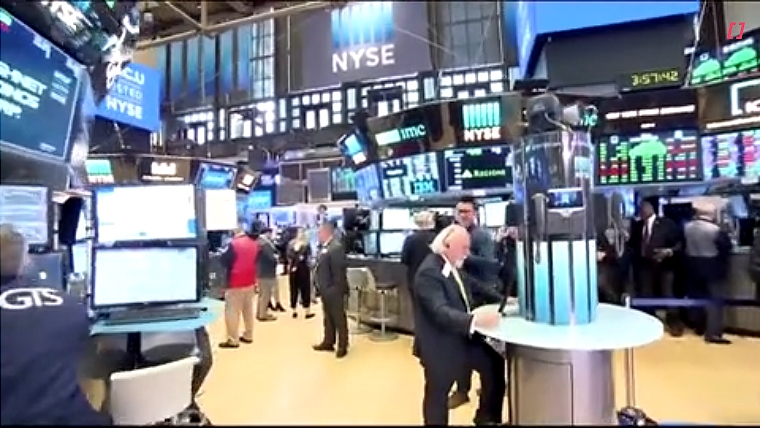
Markets have settled after the flurry following the Fed’s policy update yesterday and the moves have been in a similar direction, with US Treasury yields falling further and the USD weaker. JPY has outperformed, after another bout of official intervention shook out some more speculative positions. The NZD has pushed up through 0.5960.
A couple of market dynamics have been in play, the consolidation of moves post the FOMC meeting yesterday and the stronger yen after more intervention. An hour after we went to print yesterday, Japan’s MoF was at it again, directing the BoJ to intervene in the currency market to support the beleaguered yen, running with the tide in the post-Fed meeting aftermath. USD/JPY spiked down to just over 153 and spent most of the NZ trading session unwinding that move. However, after climbing back up through 156, overnight there has been a steady decline, back down to 153.20.
By comparing the BoJ daily current account and money broker forecasts, Bloomberg estimates that around 3.5trillion yen was spent on intervention yesterday, following on from the 5.5trillion yen spent on Monday, totalling around USD57b. Increased volatility in the yen will make it more difficult for speculators to hold positions and it is likely that some will stay away for a while. NZD/JPY has fallen to 91.3 after closing last week around 94.
Supporting a stronger yen, US Treasury yields have fallen further in the aftermath of the Fed’s update, where Chair Powell was keen to hose down views that the Fed could tighten again this cycle, given policy was already seen to be restrictive enough, and seemed much happier to convey the message that the next move would be a cut, but that depended on receiving some more inflation-friendly data.
The US 10-year rate drifted down during NZ trading hours and, after a brief selloff overnight, has pushed lower still, to 4.57%, down 4bps from the NZ close. The 2-year rate has fallen closer to 7bps, to 4.88%. The market now prices the first full rate cut in November (was December pre-Fed meeting), and 40bps for the year (from 28bps pre Fed meeting).
Second-tier US economic data didn’t move the dial, with the market more interested in the non-farm payrolls report tonight. Initial jobless claims were steady at 208k, remaining relatively low and still showing no signs of an uplift seen by other indicators, such as the Challenger job cut announcement series – that indicator dipping to 65k in April from 90k in March, but remaining higher than normal. Soft productivity growth meant unit labour costs rose an annualised 4.7% in Q1, too high for comfort and inconsistent with a 2% inflation target, but the figures are too volatile and revised significantly over time, so they rarely impact market pricing.
EUR and GBP have been relatively flat overnight against the USD. The stronger yen performance has had positive spillover effects for the NZD and AUD – the relationship being that support for the yen gives support to the yuan and thereby provides support for the NZD and AUD. If the yen has finally past its low point, helped by official intervention, then that removes a headwind for the NZD that has been in play all year.
The NZD has pushed up to through 0.5960 while the AUD has pushed up through 0.6570. NZD/AUD has been flat around 0.9175, but the NZD is modestly stronger on the other key crosses bar the yen.
Given the attention on the Fed, yesterday we neglected to mention the hit to crude oil prices after reports of much higher US crude inventories. After falling over 3%, Brent crude has recovered slightly to around USD84 per barrel.
In equity markets, after a couple of down days, the S&P500 is currently up 0.9%, ahead of Apple’s earnings announcement after the bell. Tech stocks have outperformed, with the Nasdaq index up 1½%.
Domestic rates headed lower yesterday in the aftermath of the Fed. The less hawkish than feared message brought out investors. NZGB and swap rates fell 5-6bps across much the curve. The weekly bond tender went well again, with strong bidding for the 2030s and 2033s on offer and clearing 2bps through prevailing mids. The 10-year NZGB fell 5bps to 4.87%. The bias for rates on the open will be for a further modest reduction, with the Australian 10-year future down 3bps in yield terms since the NZ close.
On the economic calendar, the US employment report will be the key focus, with non-farm payrolls expected to moderate to an increase of 240k in April, leaving the unemployment rate steady at 3.8%. Average hourly earnings of 0.3% would result in annual wage inflation moderating further to 4.0%, the weakest in nearly three years. The ISM services index is expected to rise slightly, after last month’s dip.

We welcome your comments below. If you are not already registered, please register to comment
Remember we welcome robust, respectful and insightful debate. We don't welcome abusive or defamatory comments and will de-register those repeatedly making such comments. Our current comment policy is here.